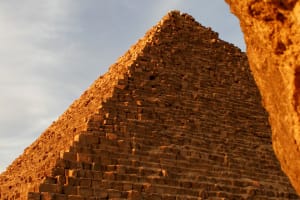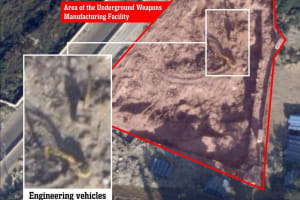US Army conducts first live-fire trial of Israeli-made Iron Dome interceptor
Defense system expected 'to protect deployed American forces from a variety of aerial threats'

The United States Armed Forces has completed the first live-fire test of the Iron Dome missile defense battery that it purchased from Israel, Israel Defense Ministry announced on Monday.
The successful testing was completed in cooperation with Israel and took place at the White Sands Missile Range in New Mexico.
The Iron Dome was developed in Israel with significant American funding and has been operational since 2011 with great success in detecting and shooting down rockets fired by terrorists in Gaza into Israel. The defense system is developed and manufactured by Israel’s leading military companies – Rafael Advanced Systems and Israel Aerospace Industries.
In 2019, Israel agreed to sell two Iron Dome systems to the United States. The first battery was delivered in late 2020 and the second in January.
In a statement, the Israeli Defense Ministry said that the Iron Dome system is expected “to protect deployed American forces from a variety of aerial threats, including cruise missiles, unmanned aerial vehicles, rockets and shrapnel.”
The Iron Dome fulfills the U.S. military's current need for short-range air defense solutions. It is designed to intercept projectiles fired by enemies from distances of between 4 to 70 kilometers. Once operational, Iron Dome will boost Washington’s defense capabilities and complement its current THAAD anti-ballistic longer-range missile defense system.
In February, U.S. Brig. Gen. Brian Gibson, who leads the integration process of the system, spoke to Defense News about the Iron Dome’s future in the U.S. military.
“That plan is being developed and finalized at the headquarter of the Department of the Army and across the enterprise on what makes sense based on all the various variables that get a vote including threat, money, transportation, time, all those things. But I’m confident from a user perspective that if directed to do so, we’re on a timeline and on a path to make it absolutely feasible to deploy this thing, and that remains our intent. Our intent is not to park them in a parking garage,” Gibson said.
The U.S. military has earmarked more than $1 billion for the integration of the Iron Dome within its own deployment. Seeking a solution to America’s shorter-distance missile defense challenges, Congress imposed a 2023 deadline to develop a domestic defense system or buy additional Iron Dome systems from the Jewish state.
During the latest conflict with Hamas in May, the Iron Dome was featured prominently in the international media with an impressive 90% success rate in neutralizing rockets fired from Gaza at Israeli civilians. The Iron Dome has become a powerful symbol of the strong and growing military alliance between Washington and Jerusalem.
In 1991, Washington provided Israel with the U.S.-manufactured Patriot air defense system in an effort to stop Iraq’s late dictator Saddam Hussein from firing Scud missiles at Israel. While the Patriot system was largely unsuccessful, the trauma from the Scud rocket attacks on Tel Aviv prompted the Jewish state to develop other solutions, eventually making it a global leader in multiple air defense systems.

The All Israel News Staff is a team of journalists in Israel.














